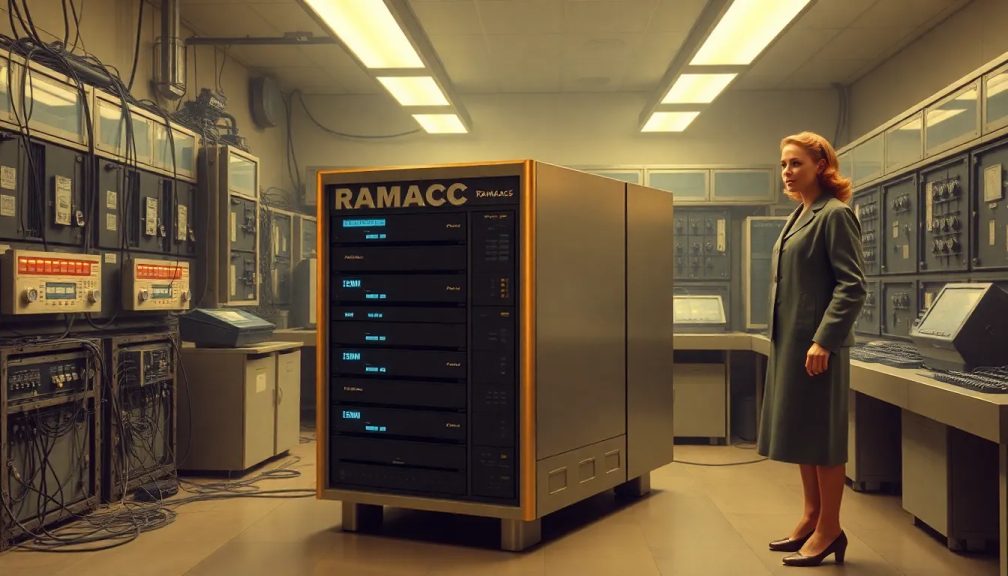IBM announces the world's first hard drive RAMAC 350 69 years ago

The world of technology has witnessed remarkable transformations over the decades, especially in the realm of data storage. For those who have been involved with computers for many years, the evolution of storage devices is particularly fascinating. From the bulky systems of the past to the sleek solid-state drives of today, the journey of storage technology is a testament to human innovation. Among these milestones is a significant event that took place 69 years ago: the introduction of the world's first hard disk drive by IBM, known as the RAMAC 350, which weighed over a ton but only offered a mere 3.75 MB of storage.
As we delve into the history of data storage, it's essential to understand how far we've come. In an age where terabytes of data can fit in the palm of our hands, the RAMAC 350 serves as a reminder of the early days of computing, where every megabyte was a monumental achievement. The RAMAC 350 not only transformed data storage but also paved the way for future advancements in technology.
The launch of the RAMAC 350: A groundbreaking achievement by IBM in 1956
When IBM unveiled the RAMAC 350 in 1956, it was a revolutionary product that changed the landscape of data storage. The RAMAC, short for "Random Access Method of Accounting and Control," was the first hard disk drive designed for commercial use. The initial models featured 50 magnetic platters, each measuring an impressive 24 inches in diameter, and spun at a speed of 1,200 RPM.
Despite its hefty weight of over a ton, the RAMAC 350 was a marvel of engineering. At the time, businesses relied heavily on punch cards for data storage, which were cumbersome and limited in capacity. The RAMAC 350 offered an astonishing (for its time) capacity of 3.75 MB, equivalent to approximately 62,500 punch cards. This innovative technology allowed for faster data retrieval and processing, marking a significant leap in efficiency for businesses.
The impressive dimensions of the RAMAC 350: Size matters
To put the size of the RAMAC 350 into perspective, consider that it was roughly the size of two large refrigerators. This massive unit measured approximately 61 inches high, 68 inches wide, and 29 inches deep. In stark contrast, modern hard drives typically measure around 3.5 inches in size, making them compact and lightweight. Below is a comparison of the dimensions and weight of the RAMAC 350 versus a contemporary hard drive:
| Feature | RAMAC 350 | Modern Hard Drive |
|---|---|---|
| Size | 61" x 68" x 29" | 3.5" (standard) |
| Weight | Over 1,000 lbs (more than 1 ton) | Less than 2 lbs |
| Storage Capacity | 3.75 MB | Up to 20 TB (and beyond) |
The RAMAC 350 and its impact on data storage
The introduction of the RAMAC 350 heralded a new era in data management. Its ability to store data on magnetic platters allowed for a more efficient and reliable alternative to other storage methods of the time. Before the RAMAC, businesses relied primarily on magnetic tapes and punch cards, which were not only slower but also less reliable.
With the RAMAC 350, companies could now:
- Access data randomly rather than sequentially, resulting in faster retrieval times.
- Store significantly more data in a compact unit, reducing the physical space needed for storage.
- Transition from using thousands of punch cards to a single storage solution, simplifying data handling.
Moreover, the RAMAC 350's introduction led to substantial advancements in software and data processing technologies. It paved the way for the development of databases, which have become crucial in handling the vast amounts of data generated today.
Comparing the RAMAC 350 to modern hard drives
Today, we can find hard drives that offer capacities in terabytes, with speeds that dwarf those of the RAMAC 350. For instance, the latest commercial hard drives, such as the Seagate Mozaic 3+, boast a storage capacity of 36 TB.
This is a staggering increase when compared to the RAMAC 350. Here are some key technological advancements that highlight the evolution of hard drives:
- Capacity: The modern hard drive can store up to 10,000 times more data than the RAMAC 350.
- Weight: A standard hard drive weighs less than 1 kg, making it portable and easy to handle.
- Speed: Modern drives can offer read/write speeds exceeding 5400 RPM, significantly reducing data access times.
Legacy of the RAMAC 350: The foundation of modern data storage
The RAMAC 350 laid the groundwork for all subsequent hard drives, influencing not just the design and functionality of storage devices but also the entire computer industry. It showcased the potential of magnetic storage and set the stage for future innovations.
Today, we can trace the lineage of storage technology back to the RAMAC 350, acknowledging its role as a pioneer in the field. The advancements made since then have led to the development of solid-state drives (SSDs), which have further revolutionized data storage by offering faster speeds and greater durability.
To appreciate the full impact of the RAMAC 350, consider watching this insightful video about its development:
As we reflect on the evolution of hard drives, the RAMAC 350 stands as a monumental achievement in the history of technology, reminding us of the rapid advancements we have made in data storage and management.




Leave a Reply